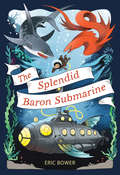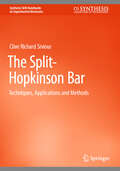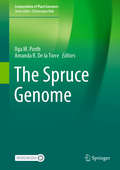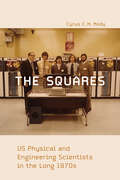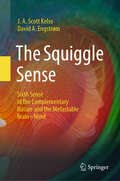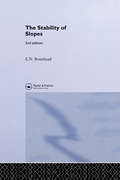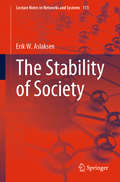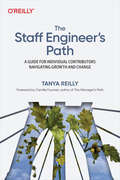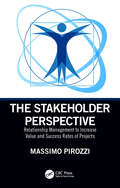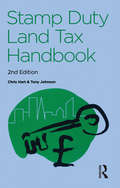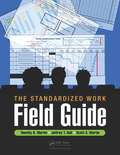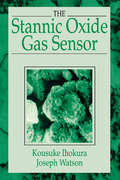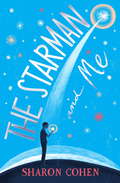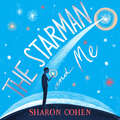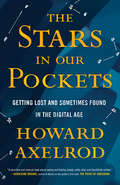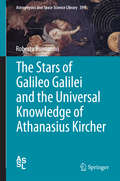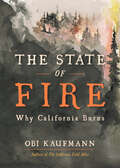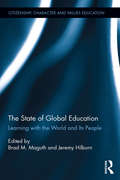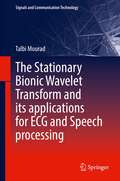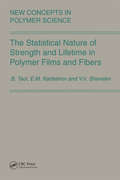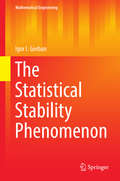- Table View
- List View
The Splendid Baron Submarine (The Bizarre Baron Inventions #2)
by Eric Bower"The Splendid Baron Submarine is delightfully absurd, imaginative, and fun—a wonderful book for middleschool children to read on their own, and an even better book for families to read aloud together." - Foreword Reviews, Starred ReviewPirate treasure? A top secret mission? A terribly rude monkey with personal boundary and hygiene issues? Two out of three of those things sound like a dream come true to the young, clumsy, and terribly unscientific Waldo “W.B.” Baron, when his clever inventor parents are hired to go on a secret treasure hunt. The Baron family dives into adventure with their steam-powered submarine, but they aren’t prepared for the complications that occur during their trip, which include shark attacks, deep sea diving mishaps, and even a pirate’s curse, all of which W.B. is lucky enough to discover, one stumble, trip, and fall at a time.
The Split-Hopkinson Bar: Techniques, Applications and Methods (Synthesis SEM Handbooks on Experimental Mechanics)
by Clive Richard SiviourThis book provides a concise practical introduction to the split-Hopkinson bar, by giving an overview of both the basic technique and a wide range of topics relevant to its application. The split-Hopkinson pressure bar (SHPB) has become the key apparatus for the characterization of the mechanical response of materials at high strain rates. Systems have been used at rates from approximately 100 to 1,000,000 s-1, to test materials ranging from low modulus elastomers to high strength superalloys. The power of the system is its suitability, with appropriate practice, to be used on many materials and in conjunction with a wide range of different diagnostic systems. Each chapter provides information and guidance for practitioners to perform high-quality experiments, whilst also introducing the resources required to engage in a deeper exploration of the topic.
The Spruce Genome (Compendium of Plant Genomes)
by Ilga M. Porth Amanda R. De la TorreThis book offers comprehensive information on the genomics of spruces (Picea spp.), naturally abundant conifer tree species that are widely distributed in the Northern Hemisphere. Due to their tremendous ecological and economic importance, the management of forest genetic resources has chiefly focused on conservation and tree improvement. A draft genome sequence of the 20-gigabase Norway spruce genome was published in the journal Nature in 2013. Continuous efforts to improve the spruce genome assembly are underway, but are hindered by the inherent characteristics of conifer genomes: high amounts of repetitive sequences (introns and transposable elements) in the genome and large gene family expansions with regards to abiotic stress, secondary metabolism and spruces' defense responses to pathogens and herbivory. This book presents the latest information on the status of genome assemblies, provides detailed insights into transposable elements and methylation patterns, and highlights the extensive genomic resources available for inferring population genomics and climate adaptation, as well as emerging genomics tools for tree improvement programs. In addition, this volume features whole-genome comparisons among conifer species, and demonstrates how functional genomics can be used to improve gene function annotations. The book closes with an outlook on emerging fields of research in spruce genomics.
The Spybot Invasion (Tom Swift Inventors' Academy #5)
by Victor AppletonTom and his friends get to the bottom of a practical joke gone wrong in this fifth novel in Tom Swift Inventors&’ Academy—perfect for fans of The Hardy Boys or Alex Rider.It&’s another day at the Swift Academy when Tom starts finding little troll-like figures around campus. And he&’s not the only one. Much to the amusement and curiosity of students, these dolls are appearing all over the school. But even after they&’re collected by faculty, a second wave mysteriously appears—except these replacements record audio and play it back for surrounding listeners. Before everyone knows it, secrets and gossip are revealed across campus, and suddenly the figures aren&’t nearly as fun as they used to be. What seemed to start as a practical joke quickly turns into something more serious when yet another wave of more advanced robots infiltrates the school. And these record and project video footage. It seems that no one is safe from the spybots as the academy spirals into mayhem, and it&’s up to Tom and his friends to track down the culprit behind the invasion.
The Squares: US Physical and Engineering Scientists in the Long 1970s (Inside Technology)
by Cyrus C. ModyWhen ungroovy scientists did groovy science: how non-activist scientists and engineers adapted their work to a rapidly changing social and political landscape.In The Squares, Cyrus Mody shows how, between the late 1960s and the early 1980s, some scientists and engineers who did not consider themselves activists, New Leftists, or members of the counterculture accommodated their work to the rapidly changing social and political landscape of the time. These &“square scientists,&” Mody shows, began to do many of the things that the counterculture urged: turn away from military-industrial funding, become more interdisciplinary, and focus their research on solving problems of civil society. During the period Mody calls &“the long 1970s,&” ungroovy scientists were doing groovy science. Mody offers a series of case studies of some of these collective efforts by non-activist scientists to use their technical knowledge for the good of society. He considers the region around Santa Barbara and the interplay of public universities, think tanks, established firms, new companies, philanthropies, and social movement organizations. He looks at Stanford University&’s transition from Cold War science to commercialized technoscience; NASA&’s search for a post-Apollo mission; the unsuccessful foray into solar energy by Nobel laureate Jack Kilby; the &“civilianization&” of the US semiconductor industry; and systems engineer Arthur D. Hall&’s ill-fated promotion of automated agriculture.
The Squiggle Sense: Sixth Sense of the Complementary Nature and the Metastable Brain~Mind
by David A. Engstrøm J. A. KelsoEither/or thinking is a major stumbling block to human development and understanding. In this book Kelso & Engstrøm offer a whole new way of looking at the world, awakening a “sixth sense” that people didn’t realize they had. It draws on the profound relationship between nature’s many complementary contraries and the paradigm shifting science of coordination called Coordination Dynamics. The human brain~mind, through the multi- and metastable modes of its coordination dynamics, gives rise to a sentient faculty called the squiggle sense. Nature's contraries are perceived not only as opposing polar states, but as coexisting complementary tendencies, symbolized by the squiggle (~). Use this book to nudge your brain~mind into its metastable mode again and again, to better perceive the complementary dances of contraries, and to transcend the detrimental narrow-mindedness of polarized, either/or thinking. As a "Metastabilian" you can wield your squiggle sense to enhance and advance your life!
The Stability of Slopes
by Eddie BromheadThe new edition of this successful book has been thoroughly revised to take account of recent advances in our understanding of slope stability and instability.
The Stability of Society (Lecture Notes in Networks and Systems #113)
by Erik W. AslaksenIn this book, Erik W. Aslaksen builds on the view and model of society introduced in The Social Bond (Springer 2018), which portrays society as an information-processing system, and as both the result of the information and of the environment in which the information processing takes place. The processing power is provided by the individual, but is also greatly enhanced by the interaction between individuals, forming the collective intelligence that drives the evolution of society. In particular, this book focuses on the stability of that evolution, an issue that is of increasing concern given the current polarisation of the world society, both politically and economically, and the resultant interference in the operation of the collective intelligence. When we approach society as a genus and its evolution as a sequence of species, such as the family, clan, fiefdom, kingdom, and nation-state, the development of the next species – the world society – is now being thwarted by the desire of a minority to maintain a hegemonial position that resulted from a singularity in the process.
The Staff Engineer's Path: A Guide for Individual Contributors Navigating Growth and Change
by Tanya ReillyFor years, companies have rewarded their most effective engineers with management positions. But treating management as the default path for an engineer with leadership ability doesn't serve the industry well--or the engineer. The staff engineer's path allows engineers to contribute at a high level as role models, driving big projects, determining technical strategy, and raising everyone's skills.This in-depth book shows you how to understand your role, manage your time, master strategic thinking, and set the standard for technical work. You'll read about how to be a leader without direct authority, how to plan ahead to make the right technical decisions, and how to make everyone around you better, while still growing as an expert in your domain.By exploring the three pillars of a staff engineer's job, Tanya Reilly, a veteran of the staff engineer track, shows you how to:Take a broad, strategic view when thinking about your workDive into practical tactics for making projects succeedDetermine what "good engineering" means in your organization
The Stakeholder Perspective: Relationship Management to Increase Value and Success Rates of Complex Projects
by Massimo PirozziThe Stakeholder Perspective places people at the center of both projects and project management. It gives to the project management community a helpful, innovative, stakeholder-centered approach to increase projects’ delivered value and success rate. It presents a logical model also called the "Stakeholder Perspective," which acts as the reference point in a structured path to effectiveness. Starting from the analysis of a project’s stakeholders, the model integrates both rational and relational innovative approaches. Its continuous focus on stakeholder requirements and expectations helps to set a proper path, and to maintain it, in order to target success and to achieve goals in a variety of projects with different size and complexity. The book presents a set of innovative and immediately applicable techniques for effective stakeholder identification and classification, as well as analysis of stakeholder requirements and expectations, key stakeholders management, stakeholder network management, and, more generally, stakeholder relationship management. The proposed stakeholder classification model consists of just four communities, each one based on the commonality of main interests and behavior. This model features an accurate and stable identification process to increase effective communication and drastic reduce relationship complexity. A systemic approach is proposed to analyze both stakeholder requirements and expectations. The approach aids in detecting otherwise unclear stakeholder requirements and/or hidden stakeholder expectations. An interactive communication model is presented along with its individual and organizational frames of reference. Also presented are relevant cues to maximize effective and purposeful communication with key stakeholders as well as with the stakeholder network. The importance of satisfying not only the project requirements but also the stakeholder expectations is demonstrated to be the critical success factor in all projects. An innovative approach based on the perceived value and key performance indicators shows how to manage different levels of project complexity. The book also defines a complete structured path to relationship effectiveness called "Relationship Management Project," which can be tailored to enhance stakeholder and communication management processes in each one of the project management process groups (i.e. initiating, planning, executing, monitoring and controlling, and closing). The book concludes with a look ahead at Project Management X.0 and the stakeholder-centered evolution of both project and portfolio management.
The Stamp Duty Land Tax Handbook
by Tony Johnson Chris HartWritten from a practical standpoint, this new edition of the Stamp Duty Land Tax Handbook details how the updated legislation works in common practice. The book's examples and case studies will be highly useful to surveyors, valuers and anyone needs to be kept up to date with the application of tax duty on Land. Unlike most other books in this area, the Handbook is based on practical experience of the work of surveyors applying the latest legislation in making valuations. The authors explain the potential pitfalls and use examples of calculations of the amounts on which tax is payable. Complex areas like administration and enforcement are clarified and explained. The Handbook will help surveyors and property professionals provide crucial support to their invididual and corporate clients.
The Standardized Work Field Guide
by Timothy D. Martin Jeffrey T. Bell Scott A. MartinThis field guide can be used directly on the gemba (work area) for implementing and documenting standardized work. It promotes the "future state" of standardized work along with crucial step-by-step techniques and explanations not found in other publications. The authors furnish many real examples of work problems that cause Lean practitioners difficulty with documentation, along with accurate solutions to those problems. The many illustrations and graphics focus on practice rather than theory. Readers learn that standardized work is not simply a tool for documentation but a method for reducing variation and providing continuous improvement through kaizen.
The Stannic Oxide Gas SensorPrinciples and Applications
by Joseph Watson Kousuke IhokuraThe Stannic Oxide Gas Sensor presents a comprehensive overview of the background science and technology of the subject, including practical information on its applications and the electronic circuits with which it is associated. The book explains the chemistry of the device and covers typical methods of fabrication. Sensitivity and selectivity are addressed, and the problems of drift with ambient temperature, relative humidity, and time are fully discussed. The book also presents examples of industrial, commercial, and domestic applications. It explains the design of appropriate electronic circuits and describes methods for testing and characterizing sensors. Advantages and disadvantages of sensors are assessed as well.
The Star Builders: Nuclear Fusion and the Race to Power the Planet
by Arthur TurrellIs it possible to build a star on earth? When asked what problem he hoped scientists will have solved by the end of the century, Professor Stephen Hawking replied 'I would like nuclear fusion to become a practical power source. It would provide an inexhaustible supply of energy, without pollution or global warming.' But what is nuclear fusion, and could it really be the answer to the climate emergency? Fusion exists already in the stars that fill our universe with light, but can we harness that power here on earth? This is the question The Star Builders seeks to answer. In his compelling new book, Dr Arthur Turrell makes the case for cutting-edge new techniques in nuclear energy - innovations that would allow us to recreate the power of the stars on our own planet. Filled with the remarkable stories of the scientists and entrepreneurs who have dedicated their lives to a seemingly impossible dream, The Star Builders is an unmissable insight into the future of life - and space - on our planet.
The Star as Icon: Celebrity in the Age of Mass Consumption
by Daniel HerwitzPrincess Diana, Jackie O, Grace Kelly—the star icon is the most talked about yet least understood persona. The object of adoration, fantasy, and cult obsession, the star icon is a celebrity, yet she is also something more: a dazzling figure at the center of a media pantomime that is at once voyeuristic and zealously guarded. With skill and humor, Daniel Herwitz pokes at the gears of the celebrity-making machine, recruiting a philosopher's interest in the media, an eye for society, and a love of popular culture to divine our yearning for these iconic figures and the role they play in our lives.Herwitz portrays the star icon as caught between transcendence and trauma. An effervescent being living on a distant, exalted planet, the star icon is also a melodramatic heroine desperate to escape her life and the ever-watchful eye of the media. The public buoys her up and then eagerly watches her fall, her collapse providing a satisfying conclusion to a story sensationally told—while leaving the public yearning for a rebirth.Herwitz locates this double life in the opposing tensions of film, television, religion, and consumer culture, offering fresh perspectives on these subjects while ingeniously mapping society's creation (and destruction) of these special aesthetic stars. Herwitz has a soft spot for popular culture yet remains deeply skeptical of public illusion. He worries that the media distances us from even minimal insight into those who are transfigured into star icons. It also blinds us to the shaping of our political present.
The Starman and Me
by Sharon CohenE.T. meets Stig of the Dump in a page-turning adventure for fans of Frank Cottrell Boyce and David Almond'A proper adventure story for all curious middle graders ... heartily recommended' The Bookbag*Highly commended for the Branford Boase Award 2018, shortlisted for the Essex Book Awards 2018, the East Sussex Children's Book Awards 2019 and nominated for the Northern Ireland Book Award 2019*He wasn't an alien, I was sure of that. It was more like he'd walked in through an ancient door from the past ... except he was here, in my bedroom and his misty forest was somewhere real on Planet Earth.Twelve-year-old Kofi first spots the prehistoric human on a supermarket roundabout. He is small and dark and curled into a tight ball. His name is Rorty Thrutch and he has zero memory of how he ended up in the unexceptional village of Bradborough, or why he's being hunted... Kofi soon finds out that Rorty can do amazing things. He can copy, paste and delete objects, using only the power of his mind. This is the discovery of the century and mad, greedy scientists will stop at nothing to track him down.Kofi and best friend Janie are on a mission. Not only must they protect Rorty, but they have to find his missing girlfriend Pogsy Blue, too. Our prehistoric ancestors have crashed headlong into the 21st century and time is running out to save them...THE STARMAN AND ME explores where we have come from and where we are moving to - it's about the magic of DNA, the power of identity, and the importance of caring for each other.
The Starman and Me
by Sharon CohenE.T. meets Stig of the Dump in a page-turning adventure for fans of Frank Cottrell Boyce and David Almond'A proper adventure story for all curious middle graders ... heartily recommended' The Bookbag*Highly commended for the Branford Boase Award 2018, shortlisted for the Essex Book Awards 2018, the East Sussex Children's Book Awards 2019 and nominated for the Northern Ireland Book Award 2019*He wasn't an alien, I was sure of that. It was more like he'd walked in through an ancient door from the past ... except he was here, in my bedroom and his misty forest was somewhere real on Planet Earth.Twelve-year-old Kofi first spots the prehistoric human on a supermarket roundabout. He is small and dark and curled into a tight ball. His name is Rorty Thrutch and he has zero memory of how he ended up in the unexceptional village of Bradborough, or why he's being hunted... Kofi soon finds out that Rorty can do amazing things. He can copy, paste and delete objects, using only the power of his mind. This is the discovery of the century and mad, greedy scientists will stop at nothing to track him down.Kofi and best friend Janie are on a mission. Not only must they protect Rorty, but they have to find his missing girlfriend Pogsy Blue, too. Our prehistoric ancestors have crashed headlong into the 21st century and time is running out to save them...THE STARMAN AND ME explores where we have come from and where we are moving to - it's about the magic of DNA, the power of identity, and the importance of caring for each other.
The Stars in Our Pockets: Getting Lost and Sometimes Found in the Digital Age
by Howard AxelrodWhat shapes our sense of place, our sense of time, and our memory? How is technology changing the way we make sense of the world and of ourselves?The human brain's ability to adapt has been an evolutionary advantage for the last 40,000 years, but now, for the first time in human history, we're effectively living in two environments at once--the natural and the digital--and many of the traits that help us online don't help us offline, and vice versa. Drawing on his experience of acclimating to a life of solitude in the woods and then to digital life upon his return to the city, Howard Axelrod explores the human brain's impressive but indiscriminate ability to adapt to its surroundings. The Stars in Our Pockets is a portrait of, as well as a meditation on, what Axelrod comes to think of as "inner climate change." Just as we're losing diversity of plant and animal species due to the environmental crisis, so too are we losing the diversity and range of our minds due to changes in our cognitive environment.As we navigate the rapid shifts between the physical and digital realms, what traits are we trading without being aware of it? The Stars in Our Pockets is a personal and profound reminder of the world around us and the worlds within us--and how, as alienated as we may sometimes feel, they were made for each other.
The Stars of Galileo Galilei and the Universal Knowledge of Athanasius Kircher
by Roberto BuonannoIn this fascinating book, the author traces the careers, ideas, discoveries, and inventions of two renowned scientists, Athanasius Kircher and Galileo Galilei, one a Jesuit, the other a sincere man of faith whose relations with the Jesuits deteriorated badly. The Author documents Kircher's often intuitive work in many areas, including translating the hieroglyphs, developing sundials, and inventing the magic lantern, and explains how Kircher was a forerunner of Darwin in suggesting that animal species evolve. Galileo's work on scales, telescopes, and sun spots is mapped and discussed, and care is taken to place his discoveries within their cultural environment. While Galileo is without doubt the "winner" in the comparison with Kircher, the latter achieved extraordinary insights by unconventional means. For all Galileo's fine work, the author believes that scientists do need to regain the power of dreaming, vindicating Kirchner's view.
The State of Fire: Why California Burns
by Obi KaufmannHow do we live with fire? From the creator of The California Field Atlas, a book of stewardship, resilience, and hope.Fire is an essential part of California's ecology. Humans have been using it to shape the California landscape for thousands of years. But today many Californians' relationship to fire is one of fear. Obi Kaufmann, author of the best-selling California Field Atlas, now asks: How do we live with fire? What makes fire essential to a healthy and biodiverse Golden State, and how do we benefit from its teachings? With the same solution-minded ethic as his much-admired The State of Water: Understanding California's Most Precious Resource, Kaufmann presents fire as a force of regeneration rather than apocalypse. He considers the long history of ecological burns, the varied ways fire behaves across the state, and the lessons we can learn from California's largest fires of recent decades.Packed with Kaufmann's signature watercolor maps and paintings, The State of Fire confronts one of California's most pressing social and ecological challenges. From this maelstrom Kaufmann emerges to share a deepened love for the natural world—and a refreshingly hopeful vision of California's future.
The State of Global Education: Learning with the World and its People (Citizenship, Character and Values Education)
by Jeremy Hilburn Brad MaguthA battle is being waged in classrooms and capitals around the world over the goals and objectives of the future of global education. While there is growing research in the area of global education, much remains to be uncovered, challenged, and learned through sound empirical research and conceptual explorations. What type of global citizens will schools promote? What types of policies, programs and instructional practices best promote effective global citizenship? Will global education curricula advance an unwavering loyalty to neoliberal ideologies and interests over the strengthening of human rights and the environmental health of our planet? This volume presents a series of research studies and innovative instructional practices centered on advancing global learning opportunities and literacies. The authors in this volume initiate a much needed conversation on ways students in multiple contexts can and should learn with the world and its people. Part I addresses global education in theory, with a particular focus on development, intercultural competence, and global citizenship. Part II addresses educational programs and practices that foster global learning and action to help build a better future for all citizens of our planet – including experiential education, university initiatives, and conceptual approaches to teaching and learning. This scholarship spans four continents in a multitude of educational contexts – primary, secondary, and tertiary - each with a focus on a different dimension of the possibilities and pitfalls in teaching about and with the world and its people.
The Stationary Bionic Wavelet Transform and its Applications for ECG and Speech Processing (Signals and Communication Technology)
by Talbi MouradThis book first details a proposed Stationary Bionic Wavelet Transform (SBWT) for use in speech processing. The author then details the proposed techniques based on SBWT. These techniques are relevant to speech enhancement, speech recognition, and ECG de-noising. The techniques are then evaluated by comparing them to a number of methods existing in literature. For evaluating the proposed techniques, results are applied to different speech and ECG signals and their performances are justified from the results obtained from using objective criterion such as SNR, SSNR, PSNR, PESQ , MAE, MSE and more.
The Stationers' Company and the Printers of London, 1501-1557
by Peter W. M. BlayneyThis major, revisionist reference work explains for the first time how the Stationers Company acquired both a charter and a nationwide monopoly of printing. In the most detailed and comprehensive investigation of the London book trade in any period, Peter Blayney systematically documents the story from 1501, when printing first established permanent roots inside the City boundaries, until the Stationers' Company was incorporated by royal charter in 1557. Having exhaustively re-examined original sources and scoured numerous archives unexplored by others in the field, Blayney radically revises accepted beliefs about such matters as the scale of native production versus importation, privileges and patents, and the regulation of printing by the Church, Crown, and City. His persistent focus on individuals - most notably the families, rivals, and successors of Richard Pynson, John Rastell, and Robert Redman - keeps this study firmly grounded in the vivid lives and careers of early Tudor Londoners.
The Statistical Nature of Strength and Lifetime in Polymer Films and Fibers
by Bronya TsoiThis monograph is an updated and extended edition of Strength and Fracture of Polymer Films, which was published in Russian in 1999. It presents the results of long-term theoretical and experimental studies of brittle and quasi-brittle fracture of solid polymers. The principal results of a comprehensive and detailed investigation of the statistical
The Statistical Stability Phenomenon
by Igor I. GorbanThis monograph investigates violations of statistical stability of physical events, variables, and processes and develops a new physical-mathematical theory taking into consideration such violations - the theory of hyper-random phenomena. There are five parts. The first describes the phenomenon of statistical stability and its features, and develops methods for detecting violations of statistical stability, in particular when data is limited. The second part presents several examples of real processes of different physical nature and demonstrates the violation of statistical stability over broad observation intervals. The third part outlines the mathematical foundations of the theory of hyper-random phenomena, while the fourth develops the foundations of the mathematical analysis of divergent and many-valued functions. The fifth part contains theoretical and experimental studies of statistical laws where there is violation of statistical stability. The monograph should be of particular interest to engineers and scientists in general who study the phenomenon of statistical stability and use statistical methods for high-precision measurements, prediction, and signal processing over long observation intervals.
